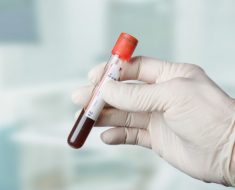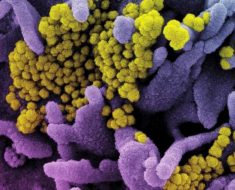Between 1997 and 2016, the proportion of children diagnosed with ADHD rose from 6.1 percent to 10.2 percent.
(iStock)
The number of children diagnosed with attention-deficit/hyperactivity disorder (ADHD) in the U.S. appears to have increased dramatically, a new study finds.
Between 1997 and 2016, the proportion of children diagnosed with ADHD rose from 6.1 percent to 10.2 percent, researchers reported in JAMA Network Open.
Greater awareness of the condition may be a factor, said study coauthor Dr. Wei Bao of the College of Public Health at the University of Iowa.
"There might be multiple reasons," Bao said in an email. "First, doctors and health professionals are better at knowing this condition than previously, so they are better at recognizing and diagnosing this condition. Second, the public is more aware of this condition, increasing the possibility of affected kids being screened and diagnosed. Third, biological factors may also play a role. For example, infants born early or small survive, but they are at higher risk of developing ADHD."
Bao and colleagues reviewed 20 years of responses to the National Health Interview Survey, which is conducted by the Centers for Disease Control and Prevention. They focused on a question in the survey: "Has a doctor or health professional ever told you that (your child) had attention-deficit/hyperactivity disorder (ADHD) or attention-deficit disorder (ADD)?"
The 2015-2016 survey included data on 18,107 children and adolescents ages 4 to 17. Overall, 1,880 had reportedly received a diagnosis of ADHD. The researchers found significant differences in prevalence with respect to race/ethnicity and gender. ADHD was reported in 14 percent of boys versus 6.3 percent of girls, and in 12 percent of non-Hispanic white children versus 6.1 percent of Hispanic children and 12.8 percent of non-Hispanic black kids.
Bao suspects the disparity between girls and boys may be at least partly because ADHD tends to be expressed differently according to gender. "Boys are usually more active than girls, therefore boys are more likely to be recognized due to hyperactivity," he said. "Girls may manifest as attention deficit, which is (harder to recognize than) hyperactivity."
Experts suggested that some of the "diagnoses" might be incorrect.
"You really have to interpret the study with caution," said Amie Bettencourt, an assistant professor in the department of psychiatry and behavioral sciences at Johns Hopkins University School of Medicine. "The authors acknowledge that they used parents’ reports of whether a doctor or health professional had told them their child had ADHD," Bettencourt said. "That opens a can of worms. There are a lot of conditions that include attention problems and hyperactivity as symptoms. It’s possible it’s on the rise. But it’s also possible that these could be symptoms of something else."
Bettencourt has seen a lot of misdiagnoses. "I specialize in young children," she said. "The increased rigor of kindergarten is leading to a lot of false identifications of ADHD. This is a time when children are still developing the capacity to sit still. Years ago there was not so much sitting still. Learning was more play and experiential based."
What the surveys are telling us, Bettencourt said, "is that a lot of children are struggling with social, emotional and behavioral difficulties."
Dr. Richard Gallagher, associate professor of Child and Adolescent Psychiatry at NYU Langone Health in New York City, is also concerned about misdiagnosis.
"This is not based upon a standard diagnosis," Gallagher said. "Parents are being told by someone in healthcare that the child has the condition. That doesn’t necessarily mean that a careful diagnosis was done in all of the cases. There are standards for a careful diagnosis. It’s not based on a quick impression. It involves gathering a lot of information, and talking to parents and teachers."
ADHD isn’t diagnosed just because a child has some problems with attention and hyperactivity, Gallagher said. "The child has to be really struggling and the symptoms have to be having a negative effect on his or her life."
Source: Read Full Article





